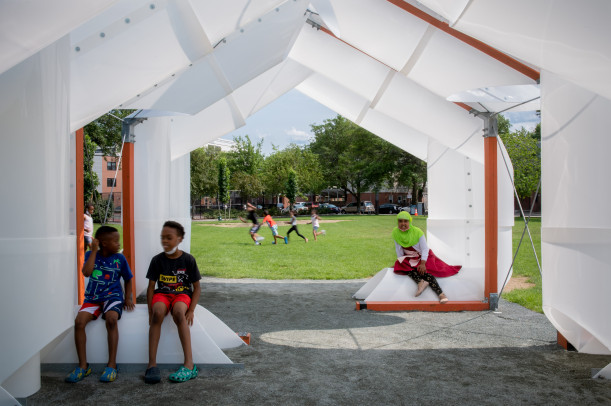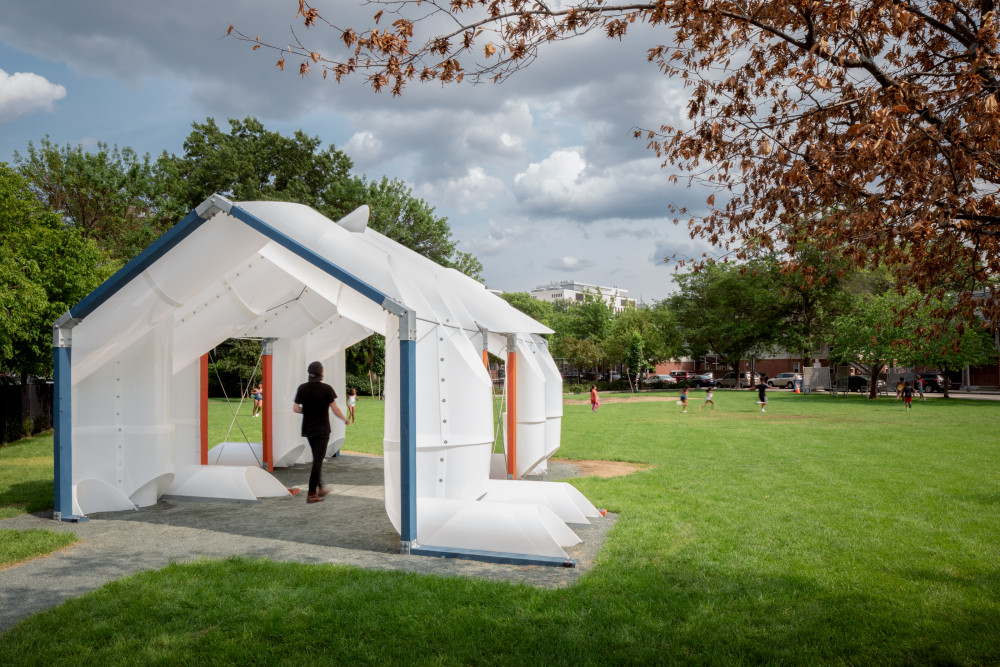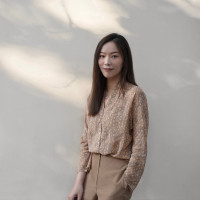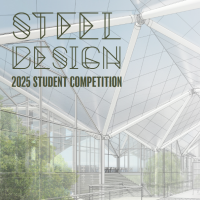Iman Fayyad, assistant professor in the School of Architecture, won the Young Architects Award for CloudHouse, a shade pavilion she designed and built with four student researchers—Rayshad Dorsey, Pietro Mendonça, Jack Raymond and Audrey Watkins (all M.Arch ’23), from the Harvard Graduate School of Design—in Greene-Rose Heritage Park, one of the more underserved and most diverse neighborhoods of Cambridge, Massachusetts.
The pavilion, developed with the City of Cambridge’s Public Space Lab and Community Development Department, provides temporary respite from the heat and rain and complements the city’s “Resilient Cambridge” program, which educates the public on urban heat islands and sustainability and recommends an increase in shading parks in lower-income neighborhoods that have a deficit of tree canopy coverage.
CloudHouse’s design was informed by one central constraint: avoiding material waste. The pavilion is built using HDPE (high-density polyethylene), a recyclable UV-treated plastic. Its translucency provides shade while letting some ambient light through, creating a sheltering membrane that is both illuminated and protective.
Designed and constructed using curved-crease folding—a geometric technique akin to origami that creates rigid structural surfaces out of low-cost, flat material—the entire structure is composed of five different reconfigurable modules that shape the walls, individual seats, communal benches and gable-vault roof and require limited skill and cost in assembly. The units are designed around the most standard and readily available stock size (4-foot x 8-foot sheets) and produce zero off-cuts in their construction.
“I appreciated the fact that this pavilion was made with a couple of different units flipped to their concave or convex sides to make an engaging shape,” said Felecia Davis, a member of the Best of Design Awards jury. “It looks like it can expand to be a bigger shelter as well and is, in fact, a building system for a material that is shapable like plastic. Perhaps this works for many kinds of recycled plastics one might find in a material stream in a community.”
Offering ample seating and an open form, CloudHouse invites people to socialize, rest and seek necessary refuge from the elements. In April 2022, it fulfilled its intention to celebrate existing usage of Greene-Rose Heritage Park by serving as a venue for Earth Day events organized by local organizations to promote education on climate resilience for Cambridge schoolchildren.
Entrants were invited this past fall to submit completed works in 39 categories that reflected AN’s editorial coverage, as well as the interests and obsessions of the newspaper’s readers. This year’s competition proved to be the largest to date for AN, with more than double the number of submissions than in typical previous iterations of this program, from firms big and small across every corner of the North American continent.

The Best of Design Awards jury—including James Burnett, president of OJB Landscape Architecture; Tei Carpenter, founder of Agency–Agency; Sekou Cooke, director of the master of urban design program at the University of North Carolina at Charlotte; Felecia Davis, associate professor at the Stuckeman Center for Design and Computation; Gabriela Etchegaray, cofounder of AMBROSI | ETCHEGARAY; Ron Stelmarski, principal and design director at Perkins&Will; Aaron Seward, editor-in-chief at The Architect’s Newspaper; and Jack Murphy, managing editor at The Architect’s Newspaper—judged each entry based on several criteria: strength of presentation, evidence of innovation, creative use of new technology, sustainability and, most importantly, good design.
Awards were given to everything from completed commercial and residential buildings to public and urban design projects; from interiors and small spaces to exhibition design and temporary installations; from research initiatives to architectural representations, and beyond.
“I feel lucky to have had the opportunity to execute this project as a demonstration of how geometry, material and construction processes can have social and environmental impacts even if at modest scales,” says Fayyad. “It was an honor and privilege to get to know the neighborhood’s history, hear stories from members of the community, and work with the City of Cambridge and my dedicated research and fabrication team.”
Fayyad is founder and director of project:if, a research practice that places constraints of architectural geometry in dialogue with material economy, visual perception, and the politics of physical space and building practice.
Winning projects, along with photos, descriptions and juror comments, are featured in AN’s Best of Design 2022 issue, distributed at industry events and conferences throughout 2023. Winners will also receive a limited-edition print from Archigram produced especially for AN.
For a full list of 2022 Best of Design Awards winners, honorable mentions, editors’ picks and project of the year profiles, visit The Architect’s Newspaper story.












